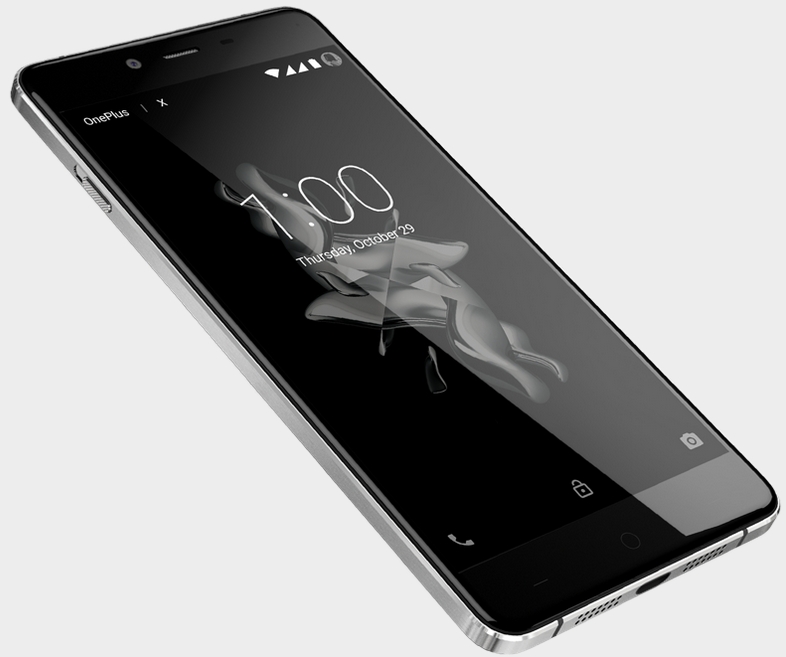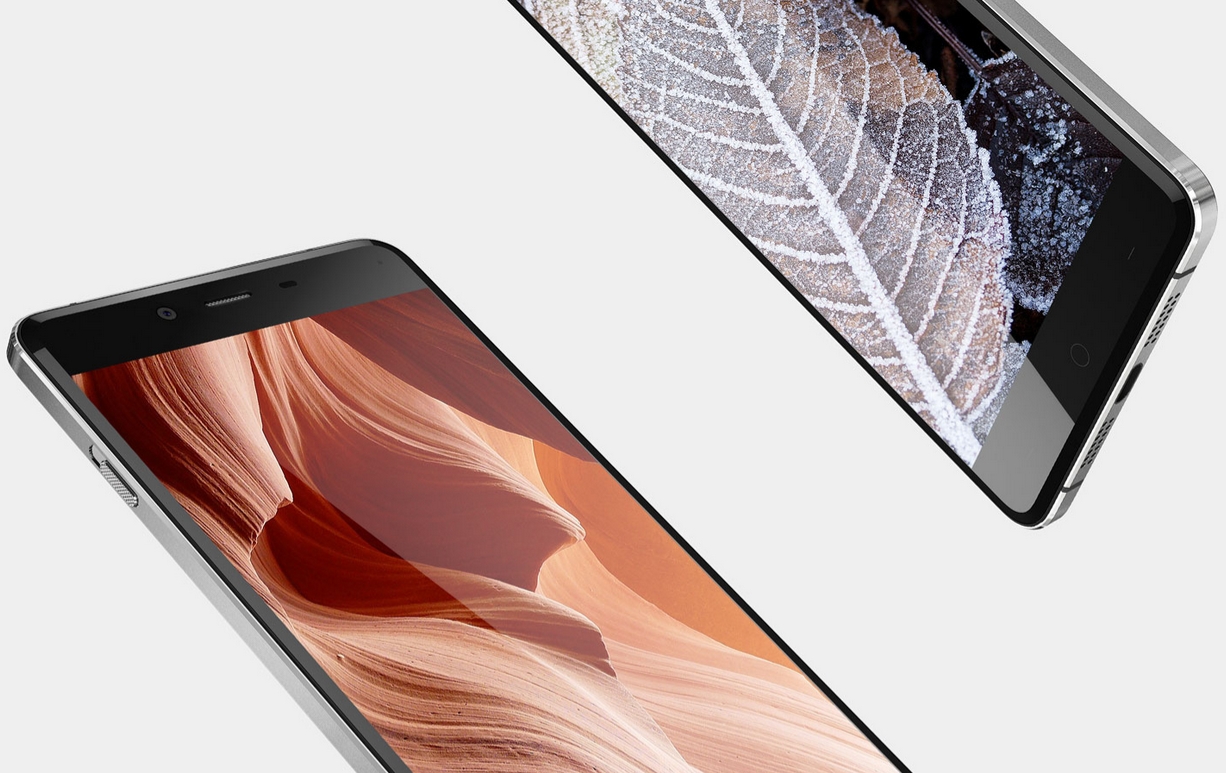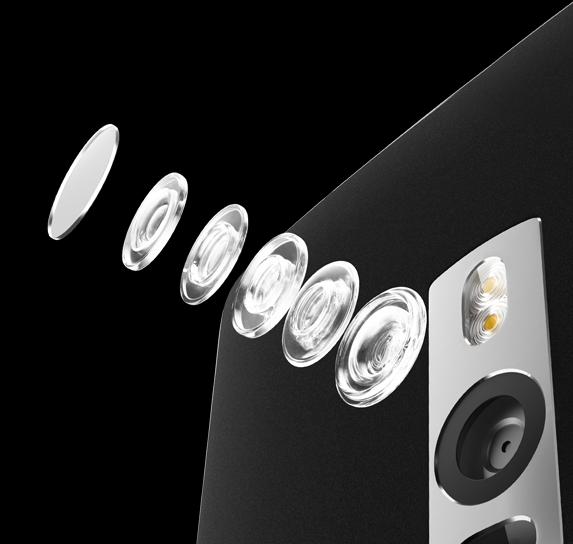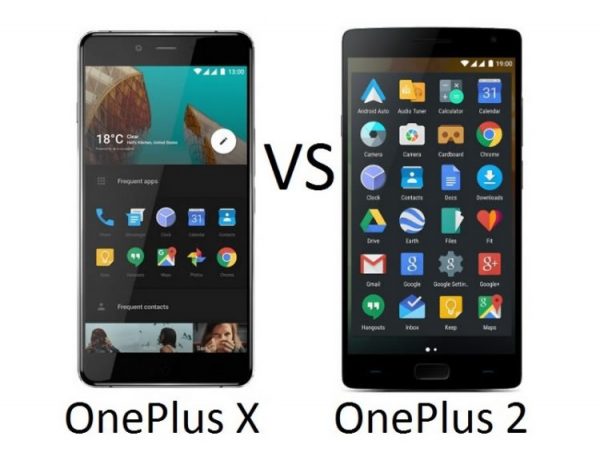OnePlus wasn’t content with just launching one smartphone this year, as it has already followed the OnePlus 2 up with the OnePlus X.
But the two phones are aimed at different audiences, with the OnePlus 2 being something of a flagship, despite its low price, while the OnePlus X is even more affordable and a little lower end.
But just how do these two phones really compare? Read on to find out.
Build
OnePlus X (140 x 69 x 6.9mm 138/160g metal and ceramic) vs OnePlus 2 (151.8 x 74.9 x 9.9mm 175g metal and sandstone)
The OnePlus X is a good looking handset, with an aluminium frame and a ceramic back. It’s very slim too at just 6.9mm thick and that combined with the relatively small 5.0-inch screen makes it much less of a handful than the OnePlus 2. It’s a premium, stylish design and the only real downside to it is that the back is a little slippery.

The OnePlus 2 is a fairly stylish phone too but it’s a lot bigger at 151.8 x 74.9 x 9.9mm. It’s heavier as well, making two-handed operation almost essential.
The standard back cover is a thin sandstone like material, which is a lot easier to grip than the ceramic OnePlus X, but far worse looking. However, it still has a metal frame and if you shell out extra you can opt for a more premium back, such as a wooden one. All in all though the design of the OnePlus 2 can’t quite match the OnePlus X.
Display
OnePlus X (5.0-inch 1080*1920 441ppi) vs OnePlus 2 (5.5-inch 1080*1920 401ppi)
The OnePlus X has a 5.0-inch 1080 x 1920 screen with a pixel density of 441 pixels per inch. That’s a lot smaller than the screen on the OnePlus 2 or the OnePlus One, which is nice to see, as not everyone wants a massive phone.
The size combined with the 1080p resolution makes it pretty sharp too and as it’s an AMOLED display the colours are vivid.

The OnePlus 2 has a 5.5-inch 1080 x 1920 LCD screen with a pixel density of 401 pixels per inch. So it’s a fair bit bigger than the OnePlus X, making it almost but not quite a phablet. Whether that’s good or bad is entirely subjective. It makes it harder to use one-handed but better for watching videos on.
However, it’s got a slightly lower pixel density as the resolution is the same and being an LCD screen it’s not quite as vibrant.
Power
OnePlus X (2.3GHz quad-core processor 3GB RAM) vs OnePlus 2 (1.82GHz octa-core processor 3/4GB RAM)
One area where the OnePlus X feels a little dated is its processor, as it has a 2.3GHz quad-core Snapdragon 801 chip. That’s not bad, in fact there was a time when it was a flagship processor, but that time was early 2014.
However, it is coupled with 3GB of RAM, making for a pretty powerful phone overall, especially as it’s a budget handset.
The OnePlus 2 is more powerful though, with an octa-core Snapdragon 810 chip and either 3 or 4GB of RAM. It is worth noting though that the Snapdragon 810 is clocked slower here than in most phones, with four cores running at 1.82GHz and the other four going at 1.56GHz.
Camera
OnePlus X (13MP rear 8MP front-facing) vs OnePlus 2 (13MP rear 5MP front-facing)
Both the OnePlus 2 and OnePlus X have 13MP main cameras, but the OnePlus 2 benefits from optical image stabilisation and a dual-LED flash, so don’t expect the OnePlus X to quite match it.

However, the OnePlus X has the edge when it comes to the front-facing camera, as it has an 8MP snapper, while the OnePlus 2 has just a 5MP one. Both are capable of solid selfies, but the OnePlus X is the phone to go for if that’s a major consideration.
For video though it’s the OnePlus 2 which comes out on top, as it can shoot in up to 2160p at 30fps, while the OnePlus X can’t manage more than 1080p at 30fps.
Battery life, memory and connectivity
OnePlus X (2525 mAh 16GB 4G) vs OnePlus 2 (3300 mAh 16/64GB 4G)
The OnePlus X has a 2525 mAh battery, while the OnePlus 2 has a far larger 3300 mAh one. It’s a larger phone too of course, but it’s still likely to offer better battery life.
There’s just 16GB of built in storage in the OnePlus X, though you also get a microSD card slot with support for cards of up to 128GB. The OnePlus 2 comes with either 16 or 64GB of storage, so there’s potentially more built in, but it doesn’t have a microSD card slot, so there’s less potential storage overall.
Connectivity options are largely similar, with both phones offering Wi-Fi, 3G, 4G and Bluetooth (4.0 in the OnePlus X and 4.1 in the OnePlus 2). However, the OnePlus 2 has a fingerprint scanner, which the OnePlus X doesn’t. Neither phone has NFC though, so even the OnePlus 2 won’t be able to make use of Android Pay.
Conclusion
The OnePlus X and OnePlus 2 have more differences than similarities. Many of those differences work out in the OnePlus 2’s favour. It’s more powerful, has a fingerprint scanner, a bigger battery and more built in storage for example.
However surprisingly a number work in the OnePlus X’s favour, despite it being cheaper, as it’s got a more stylish build, a microSD card slot and a better front-facing camera.
That’s not bad given that it costs just £200, though it’s only a little cheaper than the £239 starting price of the OnePlus 2. Both are clearly bargains then and it really comes down to what you want from your phone as to which you should buy.








